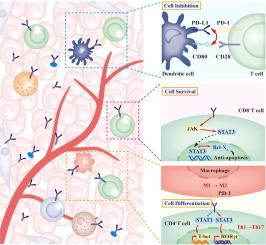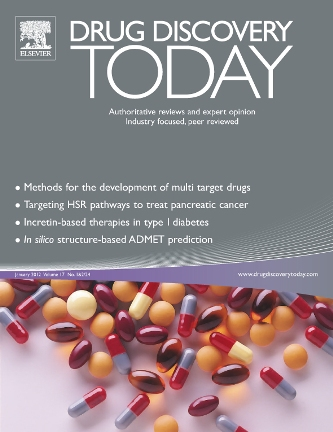肿瘤微环境中非肿瘤细胞上 PD-L1 的表达、调节和功能
IF 6.5
2区 医学
Q1 PHARMACOLOGY & PHARMACY
引用次数: 0
摘要
抗程序性死亡配体1(PD-L1)疗法是一种领先的免疫疗法,但只有部分实体瘤患者能从中获益。大量证据表明,PD-L1 表达于肿瘤微环境(TME)中的各种免疫细胞,包括巨噬细胞、树突状细胞和调节性 T 细胞,可调节肿瘤免疫并影响肿瘤进展。PD-L1 还可位于肿瘤细胞膜以及外泌体和细胞质中。因此,PD-L1的动态表达和各种形式可能是该疗法疗效有限和耐药的原因。本文系统总结了 PD-L1 在不同免疫细胞上的表达及其调控机制,为今后的研究提供了坚实的基础。本文章由计算机程序翻译,如有差异,请以英文原文为准。

Expression, regulation, and function of PD-L1 on non-tumor cells in the tumor microenvironment
Antiprogrammed death ligand 1 (PD-L1) therapy is a leading immunotherapy, but only some patients with solid cancers benefit. Overwhelming evidence has revealed that PD-L1 is expressed on various immune cells in the tumor microenvironment (TME), including macrophages, dendritic cells, and regulatory T cells, modulating tumor immunity and influencing tumor progression. PD-L1 can also be located on tumor cell membranes as well as in exosomes and cytoplasm. Accordingly, the dynamic expression and various forms of PD-L1 might explain the therapy’s limited efficacy and resistance. Herein a systematic summary of the expression of PD-L1 on different immune cells and their regulatory mechanisms is provided to offer a solid foundation for future studies.
求助全文
通过发布文献求助,成功后即可免费获取论文全文。
去求助
来源期刊

Drug Discovery Today
医学-药学
CiteScore
14.80
自引率
2.70%
发文量
293
审稿时长
6 months
期刊介绍:
Drug Discovery Today delivers informed and highly current reviews for the discovery community. The magazine addresses not only the rapid scientific developments in drug discovery associated technologies but also the management, commercial and regulatory issues that increasingly play a part in how R&D is planned, structured and executed.
Features include comment by international experts, news and analysis of important developments, reviews of key scientific and strategic issues, overviews of recent progress in specific therapeutic areas and conference reports.
 求助内容:
求助内容: 应助结果提醒方式:
应助结果提醒方式:


